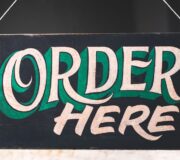25 Addition Word Problems For Grades 1-5 With Tips On Supporting Students’ Progress
Addition word problems appear throughout the elementary grade levels. Children are introduced to simple addition and subtraction word problems in the early grades. This knowledge is then built upon all the way up to 5th grade when students work with complex multi-step word problems involving large whole numbers and decimal numbers.
In the early stages, in lower and upper elementary, addition word problems are taught through the use of concrete resources and visual images, using and developing subitising skills. As learners become more confident with the formal written methods, they progress to use these to help solve more complex addition and subtraction word problems.
- Addition word problems in the Common Core
- Why are word problems important for children’s understanding of addition
- How to teach addition word problem-solving in elementary school
- Addition word problems for 1st grade
- Addition word problems for 2nd grade
- Addition word problems for 3rd grade
- Addition word problems for 4th grade
- Addition word problems for 5th grade
- Looking for more word problems resources?
Children benefit from regular exposure to word problems, alongside any fluency work they are doing. To help you with this, we have created a collection of 25 addition word problems with answer keys, which can be used with students from 1st to 5th grade.
Word Problems Grade 4 Addition and Subtraction
11 grade 4 addition and subtraction questions to develop reasoning and problem solving skills.
Download Free Now!Addition word problems in the Common Core
Schools following Common Core will introduce simple addition word problems to children in Kindergarten. By the time students reach 5th grade, they will be exposed to more complex addition word problems.
Addition word problems in Kindergarten
Students in Kindergarten are introduced to simple one-step problems involving place value addition and subtraction word problems, within 10, through the use of concrete objects and drawings. At this stage, children should be memorizing and reasoning with number bonds to 10.
Addition word problems in 1st grade
In first grade, students continue to use concrete objects and pictorial representations to solve addition problems within 20, including those involving numbers, quantities, measures and simple money word problems. They are also expected to apply their increasing knowledge of mental and written methods, using one and two-digit numbers.
Addition word problems in 2nd grade
By second grade, students are starting to tackle more complex addition word problems within 100. Students start working on basic written addition and are introduced to the concept of regrouping. Students start to work with repeated addition as a foundation to multiplication.
Addition word problems in 3rd grade
Students in 3rd grade progress to solving two-step problems in contexts, deciding which operations and methods to use and why. They are also beginning to work with larger numbers, continuing to work on basic written addition and the concept of regrouping.
Addition word problems in 4th grade
By 4th grade, students are solving multi-step word problems in contexts. They add whole numbers with more than four digits and decimal numbers, beginning to use formal written methods, including the standard algorithm. Children are also adding increasingly larger numbers mentally.
Third Space Learning’s online one-on-one tutoring programs work with students to fill their learning gaps and build confidence in math. Tailored to the needs of each student, the tutoring programs offer students more opportunities to practice their math skills and reach their year group standard.

Addition word problems in 5th grade
Students in 5th grade continue to work with larger numbers and decimals, solving increasingly complex multi-step problems, deciding which operations to use and why. By this stage students should have a solid grasp of the written methods for all four operations.
Schools not following CCSS
Other schools not following Common Core follow the same concepts for teaching addition as shown above, although some individual standards and states may vary slightly. Some concepts may be covered in a different order, depending on the curriculum your school district has adopted.
Why are word problems important for children’s understanding of addition
Word problems help children make sense of addition. In the early grades, simple story problems aid understanding of what is being asked, alongside the use of concrete resources and visual images. Real-world word problems are an important element of math, giving children the opportunity to put the addition skills they have learned into context, to understand how they can be used in real life.
How to teach addition word problem-solving in elementary school
Students need to be taught how to approach word problems, beginning by reading the questions carefully and making sure they fully understand what is being asked. The next step is to determine what calculation is needed and whether there are concrete resources or pictorial representations (such as a bar model) they can use to help solve it.
Here is an example:
There were 3,756 people on a cruise ship.
456 people get on after the first week, while 623 get off.
How many passengers are on board the ship now after the first week?
How to solve:
What do you already know?
- There are 3,756 on the cruise ship at the start of the journey.
- 456 people get on after the first week, therefore we need to add 456 to 3,746. This gives us a total of 4,212 people
- 623 people get off, so we need to subtract 623 from the total number of passengers now on the ship. When we subtract 623 from 4,212, we get a total of 3,589.
How can this be represented pictorially?

- We can draw 2 bar models to represent this problem.
- The number of passengers who got on the ship after the first week is added to the total number of people on the ship at the start of the trip.
- We then draw a second bar model to show how many passengers were left on the ship once the 623 passengers got off after the first week.
Addition word problems for 1st grade
Addition word problems in 1st grade require students to work with 1 and 2-digit numbers, up to 20. At this stage it is important children are working with concrete resources to support their understanding. Children also begin to learn how to check their answers by finding the inverse of calculations.
1st grade addition question 1
Maise has 14 crayons. Her friend gives her 4 more.
How many crayons does Maisie have now?
Answer: 18 crayons
14 + 4 = 18
1st grade addition question 2
Hamza buys a large pack of cookies, while his sister buys a small pack.
The large pack contains 10 cookies, while the small pack contains 6.
How many cookies does Hamza and his sister have altogether?
Answer: 16 cookies
10 + 6 = 16
1st grade addition question 3
13 children sign up for the after-school soccer club and 4 sign up for the tennis club.
How many children sign up altogether?
Answer: 17 children
13 + 4 = 24
1st grade addition question 4
Amy collects 6 chestnuts. Her brother finds 7 more and adds them to her collection.
How many chestnuts does Amy have now?
Answer: 13 chestnuts
6 + 7 = 13
1st grade addition question 5
6 children were on the bus going to the zoo.
The bus stopped to pick up 13 children from another school.
How many children were on the bus now?
Answer: 19 children
6 + 13 = 19
Addition word problems for 2nd grade
Word problems for 2nd grade require students to work with larger numbers. By this stage, children are becoming more confident with addition are able to use this to solve 2 digit addition word problems up to 100. Addition word problems can be incorporated into other areas of the math curriculum, for example, through time word problems.
2nd grade addition question 1
Mason has collected 56 stickers. Rory has collected 26 stickers.
How many stickers have the two boys collected between them?
Answer: 82 stickers
56 + 26 = 82
2nd grade addition question 2
A train driver drove 34 miles on Monday and a further 61 miles on Tuesday.
How many miles did he drive in total over the 2 days?
Answer: 95 miles
34 + 61 = 95
2nd grade addition question 3
Sam spent 2 quarters on a candy bar at the store. He then spent 4 dimes on a packet of gum. How much did he spend all together?
Answer: 90¢
50¢ + 40¢ = 90¢
2nd grade addition question 4
Carson bought 34 pencils for the beginning of the school year. He already had 17 left from last year. How many pencils does Carson have?
Answer: 51 pencils
34 + 17 = 51
2nd grade addition question 5
A family was traveling to their vacation home.
Kaleb packed 4 pairs of shorts and 6 shirts.
Candice packed 6 pairs of shorts and 9 shirts.
How many pieces of clothing did Kaleb and Candice pack?
Answer: 25 pieces of clothing
4 + 6 + 6 + 9 = 25
Addition word problems for 3rd grade
With word problems for 3rd grade, students progress onto solving addition word problems up to 1,000 using strategies and algorithms. They are also beginning to solve more complex, two-step word problems. Children should be encouraged to estimate and find the inverse, to check the accuracy of their calculations.
3rd grade addition question 1
A builder is building a wall around the school playing field.
He has used 465 bricks so far and has another 335 bricks to finish the wall.
How many bricks will he use to build the wall?
Answer: 800 bricks
465 + 335 = 800
3rd grade addition question 2
Hot dogs: $2
Burgers: $4
Pizza: $3
Fries: $1
Soft drinks: $2
Chloe is buying some food from a cafe.
She buys 2 hot dogs, a pizza, 2 orders of fries and 2 drinks.
How much does she spend altogether?
Answer: $13
Hot dogs: $2 + $2= $4
Pizza: $3
Fries: $1 + $1 = $2
Drinks: $2 + $2 = $4
Total= $4 + $3 + $2 + $4 = $13
3rd grade addition question 3
A runner is completing a 1,000m race.
He has already run 560m. How much further does he have to run?
Answer: 440m
Solved mentally by calculating how many more meters to 600m – 40m, then adding on a further 400m = 440m.
This can also be solved as a missing number column addition, or as a subtraction calculation.
3rd grade addition question 4
Ben has $50. He buys a t-shirt for $15 and a hoodie for $25.
How much change does he have left?
Answer: $10 change
$15 + $25 = $40
$50 – $40 = $10
3rd grade addition question 5
A flight from Boston to New York is a distance of 184 miles. It is then another 764 miles to Nashville.
How far is the journey from Boston to Nashville, stopping in New York?
Answer: 948 miles
184 + 764 = 948
Addition word problems for 4th grade
Word problems for 4th grade require students to solve addition word problems with 4-digit numbers and larger, using formal written methods and mentally. Word problems become more complex multi-step problems, involving other operations. Students at this stage should continue to be encouraged to check their answers by finding the inverse. In 4th grade, students also solve addition word problems involving fractions with the same denominator.
4th grade addition question 1
Three towns have populations of 4,768, 7,956 and 3,858.
What is the total population of the three towns combined?
Answer: 16,582
(Show as column method 4,768 + 7,956 + 3,858 = 16,582)
4th grade addition question 2
Katherine bought 2 cakes for her son’s birthday, one chocolate and one vanilla. The kids at the party ate 23 of the chocolate cake and 23 of the vanilla cake. How much cake did the kids at the party eat?
Answer: 113 or 43
23+23=43, or 113
4th grade addition question 3
A man weighing 225 lbs gets into an elevator. On the next floor, another man gets in, weighing 179 lbs.
If the elevator can hold a maximum weight of 500 lbs, how much more weight can the elevator carry?
Answer: 96 pounds
(show as column method)
225 + 179 = 404
500 – 404 =96
Or
Count up from 404 or solve as a missing number addition.
4th grade addition question 4
Below are the populations of the 5 largest cities in Kansas.
Wichita – 396,192
Overland Park – 197,726
Kansas City – 153,345
Olathe – 145,616
Topeka – 125,449
How many people live in Wichita and Kansas City?
Answer: 549,537
396,192 + 153,537 = 549,537
4th grade addition question 5
A family of 4 went to the fair, 2 adults and 2 children. The adult tickets cost $18 and the kid tickets were $9. If they also spent $55 on food and games, how much did the family spend at the fair?
Answer: $109
18 + 18 + 9 + 9 = 54
54 + 55 = 109
Addition word problems for 5th grade
With word problems for 5th grade, students need to be able to solve word problems using larger whole numbers of up to 6 or 7 digits, problems involving fraction word problems and problems involving decimals.
5th grade addition question 1
David spent $24,799 on a new car and $8,750 on a caravan.
He has $15,074 left in his bank account.
How much did he have to start with?
Answer: $48,623
24,799 + 8,750 = 33,549
33,549 + 15,074 = 48,623
5th grade addition question 2
17,523 more people visited a theme park this year than last year.
If 315,736 people visited last year. How many visited this year?
Answer: 333,259 people
315,736 + 17,523 = 333,259
5th grade addition question 3
A zoo buys 107.4lbs of animal feed. Each day, 14.52 lbs is used for the camels, 6.3lbs for the meerkats and 9lbs for the zebras.
After 2 days, how much will the zoo have left?
Answer: 47.76 lbs left
14.52 + 6.3 + 9 = 29.82
29.82 + 29.82 = 59.64
107.4 – 59.64 = 47.76
5th grade addition question 4
A company sent out 1,417,806 flyers in April and 931,368 in May.
- Estimate how many flyers the company sent out in April and May combined.
- What is the actual number of flyers sent out?
Answer
- 2,300,000
1,400,000 + 900,000 = 2,300,00
- 1,417,806 + 931,368 = 2,349,174
5th grade addition question 5
The Brown family are going on a road trip. They plan to drive 274.3 miles to a hotel. They then have another 276.9 miles to drive to reach their final destination.
If they have traveled 197.8 miles so far, how much further do they have to travel before they reach their final destination?
Answer: 353.4 miles
274.3 + 276.9 = 551.2
551.2 – 197.8 = 353.4
Looking for more word problems resources?
Take a look at our comprehensive collection of word problems practice questions covering a wide range of topics such as ratio word problems, percentages word problems, multiplication word problems, division word problems and more.
Do you have students who need extra support in math?
Give your students more opportunities to consolidate learning and practice skills through personalized math tutoring with their own dedicated online math tutor.
Each student receives differentiated instruction designed to close their individual learning gaps, and scaffolded learning ensures every student learns at the right pace. Lessons are aligned with your state’s standards and assessments, plus you’ll receive regular reports every step of the way.
Personalized one-on-one math tutoring programs are available for:
– 2nd grade tutoring
– 3rd grade tutoring
– 4th grade tutoring
– 5th grade tutoring
– 6th grade tutoring
– 7th grade tutoring
– 8th grade tutoring
Why not learn more about how it works?
The content in this article was originally written by former Deputy Head Teacher, Emma Johnson and has since been revised and adapted for US schools by elementary math teacher Christi Kulesza





